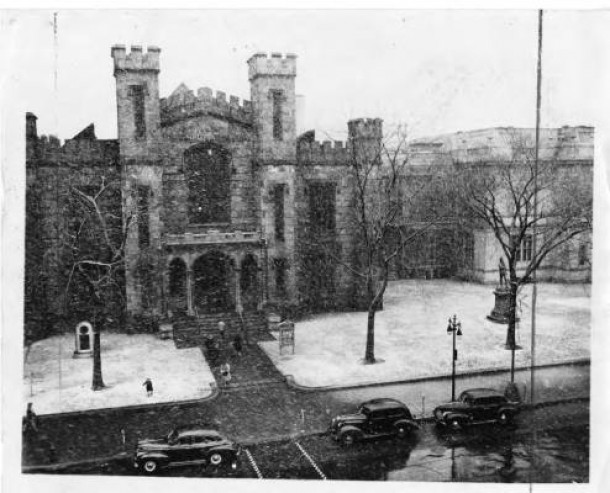…that the Wadsworth Atheneum contributed to home front morale and fundraisers during World War II.
In December 1940, The Wadsworth Atheneum News Bulletin reported that a two-day British Relief Sale held in the museum’s Morgan Memorial building had raised “approximately $16,000” to help war-torn England. Furthermore, the Trinity Jesters of nearby Trinity College would be performing in the museum’s Avery Memorial Auditorium later that month to raise money for an ambulance to be given to England. These activities occurred at a time when many in the United States, including those in government, still hoped that aid to Great Britain would be sufficient to secure an allied victory without the commitment of US troops.
The bombing of Pearl Harbor on December 7, 1941, shattered hopes that the United States would remain the “Great Neutral” during the European conflict. The Atheneum, aware that European museums had been bombed, immediately rushed the most valuable of its art treasures to Farmington, where art collector James Soby maintained a storage vault.
Art as Remedy for “War Jitters”
The Wadsworth Atheneum, which in this period also housed the Connecticut Historical Society, Hartford Public Library, and Watkinson Library (now at Trinity College) within its multibuilding complex, remained open to the public. It also continued its tradition of making its facilities available to social, civic, philanthropic, and arts groups for meetings and events. Throughout the war it hosted the meetings of such groups as the Hartford War Chest and war-related events conducted by various fundraisers, the Armistice Day Committee of the City of Hartford, the Air Cadets Procurement Board, and others. The Hartford Art School conducted evening classes in the museum’s Avery Memorial for war workers, allowing them a few pleasurable hours in which to replace their “factory aprons” with “artists’ smocks.” As the Hartford Times reported, the practice of art had been recommended as a particularly useful defense against “community ‘war jitters,’ adult instability, juvenile delinquency and destruction of folk cultures in a world unsettled by war.”
The Atheneum also did its part as an institutional citizen to support the war effort through the purchase of US Treasury bonds. In a September 1943 issue of the Hartford Daily Courant, Wadsworth Atheneum president and treasurer Charles A. Goodwin is shown purchasing a $12,000 bond for the museum in response to Hartford’s third War Loan Drive. By January 1945, the war bonds held by the museum were valued at $140,000.









